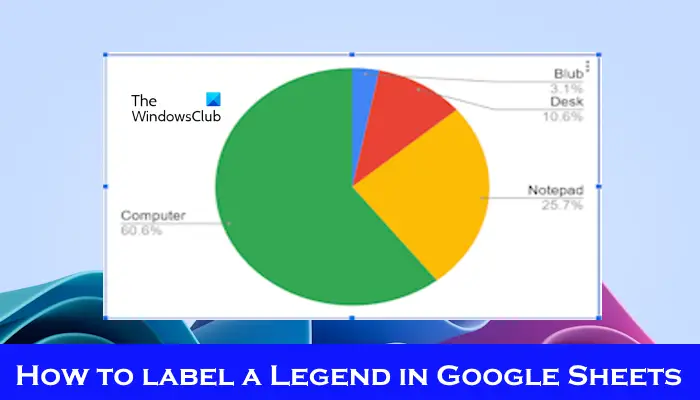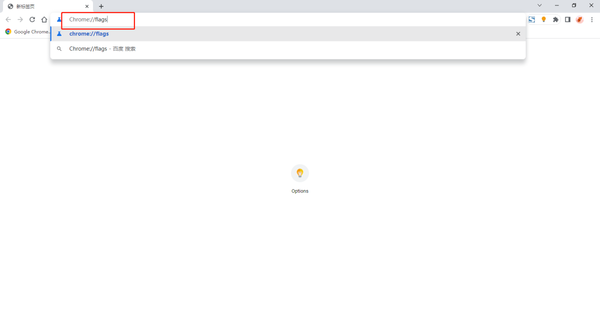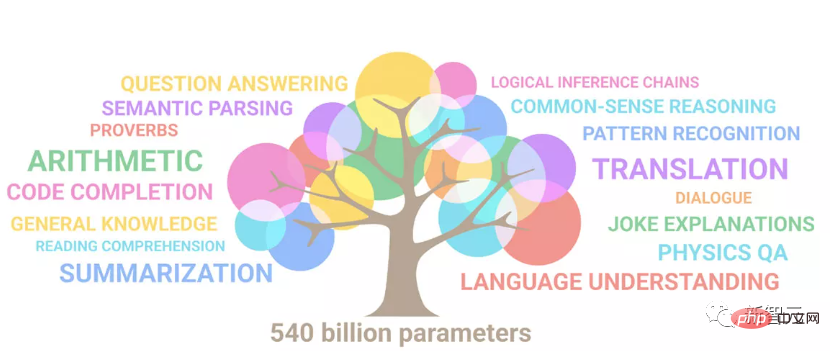Google's old name was "Backrub," reflecting its initial focus on analyzing backlinks. 1) Started as Backrub at Stanford in 1996, it used a basic backlink algorithm. 2) Rebranded to Google in 1997, symbolizing a broader ambition to organize internet information. 3) Evolved with PageRank, enhancing search capabilities, and innovations like the Google File System to handle data growth.

Google's old name was "Backrub." This name reflected the search engine's initial focus on analyzing the web's "back links" to determine the importance of a website. Now, let's dive into the fascinating world of how Google evolved from Backrub to the tech giant we know today.
The Journey from Backrub to Google
When Larry Page and Sergey Brin started their project at Stanford University in 1996, they named it Backrub. This name was a nod to the algorithm they developed, which analyzed the backlinks of websites to rank them. It's interesting to think about how a simple name like Backrub could have been the start of something so monumental.
As they continued to refine their search engine, they realized that the name Backrub didn't quite capture the essence of what they were building. In 1997, they decided to rebrand to Google, a play on the word "googol," which represents the number 1 followed by 100 zeros. This name change symbolized their ambition to organize the vast amount of information on the internet.
The Evolution of Google's Technology
From Backrub to Google, the technology behind the search engine evolved significantly. Initially, Backrub's algorithm was quite basic, focusing primarily on backlinks. But as Google grew, so did its capabilities. The introduction of PageRank, named after Larry Page, was a game-changer. It provided a more sophisticated way to rank pages based on the quality and quantity of links pointing to them.
Here's a simple Python script to illustrate a basic version of PageRank:
import numpy as np
def pagerank(graph, damping_factor=0.85, max_iterations=100, tolerance=1e-6):
n = len(graph)
# Initialize the PageRank vector
pr = np.ones(n) / n
for _ in range(max_iterations):
new_pr = np.zeros(n)
for i in range(n):
for j in range(n):
if graph[j][i] > 0:
new_pr[i] = pr[j] * graph[j][i] * damping_factor
new_pr[i] = (1 - damping_factor) / n
if np.sum(np.abs(new_pr - pr)) < tolerance:
break
pr = new_pr
return pr
# Example usage
graph = np.array([
[0, 1, 0, 0],
[0, 0, 1, 0],
[0, 0, 0, 1],
[1, 0, 0, 0]
])
ranks = pagerank(graph)
print("PageRank:", ranks)This script demonstrates a simplified version of the PageRank algorithm. It's fascinating to see how such a concept could be the backbone of Google's search engine.
Challenges and Innovations
The transition from Backrub to Google wasn't without its challenges. One of the biggest hurdles was scaling the search engine to handle the ever-growing internet. Google's engineers had to constantly innovate to keep up with the demand for faster and more accurate search results.
One of the key innovations was the development of the Google File System (GFS), which allowed Google to store and retrieve data more efficiently. This was crucial for handling the massive amounts of data required for search indexing.
The Impact of Google's Name Change
The name change from Backrub to Google had a profound impact on the company's identity and growth. "Google" became synonymous with searching the internet, and the company's mission to organize the world's information became clearer.
It's interesting to think about how a name can influence perception. Backrub might have been too technical and limited in scope, whereas Google captured the imagination and ambition of the project.
Lessons Learned and Future Directions
From the journey of Backrub to Google, there are several lessons we can learn. First, the importance of a name that reflects the vision and scope of a project cannot be overstated. Second, continuous innovation and adaptation are crucial for success in the tech industry.
Looking to the future, Google continues to evolve, with projects like Google Brain and DeepMind pushing the boundaries of artificial intelligence. It's exciting to think about what the next chapter in Google's story will be.
In conclusion, the transformation from Backrub to Google is a testament to the power of vision, innovation, and the right name. It's a journey that continues to inspire and shape the digital world.
The above is the detailed content of What is Google's old name?. For more information, please follow other related articles on the PHP Chinese website!
 如何在Google Sheet中为图例添加标签Feb 19, 2024 am 11:03 AM
如何在Google Sheet中为图例添加标签Feb 19, 2024 am 11:03 AM本文将演示如何在GoogleSheet中为图例添加标签,这些标签侧重于单个事物,提供名称或标识。图例解释了事物的系统或组,为您提供相关的上下文信息。如何在GoogleSheet中为图例添加标签有时候,在使用图表时,我们想要让图表更易于理解。通过添加恰当的标签和图例,可以实现这一目的。接下来,我们将介绍如何在Google表格中为图例添加标签,让您的数据更加清晰明了。创建图表编辑图例标签的文本我们开始吧。1]创建图表要标记图例,首先,我们必须创建一个图表:首先,在GoogleSheets的列或行中输
 Google Pixel 9 and Pixel 9 Pro rumoured to gain Creative Assistant AI upon releaseJun 22, 2024 am 10:50 AM
Google Pixel 9 and Pixel 9 Pro rumoured to gain Creative Assistant AI upon releaseJun 22, 2024 am 10:50 AMCurrently, four new Pixel smartphones are anticipated to land this autumn. To recap, the series is rumoured to feature thePixel 9 and Pixel 9 Pro at launch. However, the Pixel 9 Pro will be a rival to the iPhone 16 Pro rather than a Pixel 8 Pro (curr
 优化谷歌浏览器下载速度的技巧与方法Dec 27, 2023 pm 03:42 PM
优化谷歌浏览器下载速度的技巧与方法Dec 27, 2023 pm 03:42 PM在现代社会中,网络已经成为我们获取信息、分享资源和进行日常活动的主要方式。其中,文件下载是我们经常需要进行的操作之一,无论是从个人电脑到移动设备,还是从互联网服务器到本地存储设备。然而,快速稳定的文件下载可能会受到许多因素的影响,包括网络连接速度、服务器响应时间、浏览器性能等。今天,我们将重点讨论如何通过优化谷歌浏览器来提高文件下载速度。谷歌浏览器无法启动更新检查的解决方法1、打开谷歌浏览器,在地址栏输入【Chrome://flags】后按回车,进入到Chrome的实验功能中。 2、在搜索栏中搜
 Google AI announces Gemini 1.5 Pro and Gemma 2 for developersJul 01, 2024 am 07:22 AM
Google AI announces Gemini 1.5 Pro and Gemma 2 for developersJul 01, 2024 am 07:22 AMGoogle AI has started to provide developers with access to extended context windows and cost-saving features, starting with the Gemini 1.5 Pro large language model (LLM). Previously available through a waitlist, the full 2 million token context windo
 Google app beta APK teardown reveals new extensions coming to Gemini AI assistantJul 30, 2024 pm 01:06 PM
Google app beta APK teardown reveals new extensions coming to Gemini AI assistantJul 30, 2024 pm 01:06 PMGoogle's AI assistant, Gemini, is set to become even more capable, if the APK teardown of the latest update (v15.29.34.29 beta) is to be considered. The tech behemoth's new AI assistant could reportedly get several new extensions. These extensions wi
 Leaked Google Pixel 9 adverts show new AI features including \'Add Me\' camera functionalityJul 30, 2024 am 11:18 AM
Leaked Google Pixel 9 adverts show new AI features including \'Add Me\' camera functionalityJul 30, 2024 am 11:18 AMMore promotional materials relating to the Pixel 9 series have leaked online. For reference, the new leak arrived shortly after 91mobiles shared multiple images that also showcased the Pixel Buds Pro 2 and Pixel Watch 3 or Pixel Watch 3 XL. This time
 顺手训了一个史上超大ViT?Google升级视觉语言模型PaLI:支持100+种语言Apr 12, 2023 am 09:31 AM
顺手训了一个史上超大ViT?Google升级视觉语言模型PaLI:支持100+种语言Apr 12, 2023 am 09:31 AM近几年自然语言处理的进展很大程度上都来自于大规模语言模型,每次发布的新模型都将参数量、训练数据量推向新高,同时也会对现有基准排行进行一次屠榜!比如今年4月,Google发布5400亿参数的语言模型PaLM(Pathways Language Model)在语言和推理类的一系列测评中成功超越人类,尤其是在few-shot小样本学习场景下的优异性能,也让PaLM被认为是下一代语言模型的发展方向。同理,视觉语言模型其实也是大力出奇迹,可以通过提升模型的规模来提升性能。当然了,如果只是多任务的视觉语言模
 如何在 Ubuntu 上安装 Google 字体 22.04 LTSFeb 19, 2024 pm 11:18 PM
如何在 Ubuntu 上安装 Google 字体 22.04 LTSFeb 19, 2024 pm 11:18 PM使用Google字体能够显著增强数字内容的视觉吸引力。透过精心挑选的字体,您可以为信息设定特定的氛围,提升文本的易读性,为观众带来更具吸引力的阅读体验。通过GoogleFonts,您可以轻松地探索各种字体风格,找到与您的设计理念完美契合的字体。在Ubuntu上安装GoogleFonts22.04LTSJammyJellyfish在开始安装之前,请务必确保您的Ubuntu22.04系统是最新的。保持系统更新不仅可确保您拥有最新功能和安全补丁,还有助于避免新软件安装时可能出现的兼容性问题。sudoa


Hot AI Tools

Undresser.AI Undress
AI-powered app for creating realistic nude photos

AI Clothes Remover
Online AI tool for removing clothes from photos.

Undress AI Tool
Undress images for free

Clothoff.io
AI clothes remover

AI Hentai Generator
Generate AI Hentai for free.

Hot Article

Hot Tools

SublimeText3 Chinese version
Chinese version, very easy to use

mPDF
mPDF is a PHP library that can generate PDF files from UTF-8 encoded HTML. The original author, Ian Back, wrote mPDF to output PDF files "on the fly" from his website and handle different languages. It is slower than original scripts like HTML2FPDF and produces larger files when using Unicode fonts, but supports CSS styles etc. and has a lot of enhancements. Supports almost all languages, including RTL (Arabic and Hebrew) and CJK (Chinese, Japanese and Korean). Supports nested block-level elements (such as P, DIV),

Notepad++7.3.1
Easy-to-use and free code editor

DVWA
Damn Vulnerable Web App (DVWA) is a PHP/MySQL web application that is very vulnerable. Its main goals are to be an aid for security professionals to test their skills and tools in a legal environment, to help web developers better understand the process of securing web applications, and to help teachers/students teach/learn in a classroom environment Web application security. The goal of DVWA is to practice some of the most common web vulnerabilities through a simple and straightforward interface, with varying degrees of difficulty. Please note that this software

SecLists
SecLists is the ultimate security tester's companion. It is a collection of various types of lists that are frequently used during security assessments, all in one place. SecLists helps make security testing more efficient and productive by conveniently providing all the lists a security tester might need. List types include usernames, passwords, URLs, fuzzing payloads, sensitive data patterns, web shells, and more. The tester can simply pull this repository onto a new test machine and he will have access to every type of list he needs.







